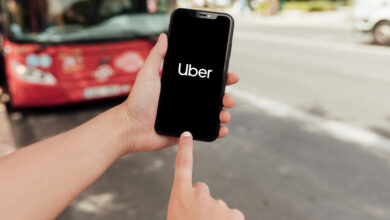Is the Uber and Lyft – Gig Economy Battle Over Workers Nearing Its End Game?

In some ways, Uber and Lyft are back to square one.

With federal regulators set to tighten Trump-era labor standards that let Uber and Lyft, as well as food-delivery services like Doordash, treat gig workers as independent contractors with few protections under labor law, shares dropped sharply last week. But while a shift, the Department of Labor proposal doesn’t immediately transform gig workers into employees entitled to overtime pay, unemployment insurance and other benefits.
What’s clear is that the ongoing conflict over how these on-demand companies treat their drivers isn’t going away, since an estimated one in six Americans has worked in the gig economy in one way or another. Analysts and pundits following the rideshare industry think the future holds some series of compromises that will give drivers at least limited benefits — a model known as independent contractor-plus — with some believing that the Biden administration’s pro-union stance will lead to workers being classified as employees eventually.
Both solutions would be likely to raise Uber and Lyft’s costs — and create a different business model for the entrepreneurs using their cars to run, in effect, small businesses of their own. And each highlights the unrealized promise of ridesharing business models: The absence of self-driving cars that investors once believed would make profits at the companies soar and put most drivers out of business.

“It seems like the start of a Game of Thrones battle between the Department of Labor and the gig economy,′ Wedbush analyst Dan Ives said. “When pressure was confined to the states, it was one thing. It has added another variable.”
For now, the rules proposed by the DOL won’t make drivers into employees, who would also be entitled to benefits such as minimum-wage protection, overtime pay, and to be paid when they are at work but don’t have a passenger in their car. Such a move would likely also cause pressure on the companies to offer the drivers health insurance and vacation pay, especially for the minority of drivers who do gig work full-time, though Morgan Stanley analyst Brian Nowak said state-level litigation could also force such change.
For now, the DoL rules will apply a broader series of tests to determine who is a truly independent contractor and who’s not. The companies point to the flexibility of rideshare employment, which lets drivers set their own hours, as a sign that drivers are independent contractors. Advocates for drivers being treated as employees argue that Uber and Lyft set workers’ pay, dispatch them to trips, and monitor their work as closely as they would an employee’s, even using technology to ask passengers in mid-ride whether their driver is acting erratically based on a vehicle’s speed.

The shift in federal policy, largely restoring the status quo under the Obama administration (and most of the Trump years, since the last administration didn’t loosen the rules until early 2021), comes at a delicate time for both rideshare companies.
Each has been promising Wall Street that it will soon turn profitable. By some standards — especially the more lenient earnings before interest taxes, depreciation and amortization — they have gotten there. But neither makes money under formal accounting standards, and neither has had positive free cash flow over the last 12 months, though Uber was positive in the second quarter.
Both businesses were hammered by the Covid pandemic, which made both drivers and passengers use car services much less often. Each company lost more than half of its value in 2020, recovered to new highs by last year, and has seen shares pounded anew in 2022.
Source: CNBC



